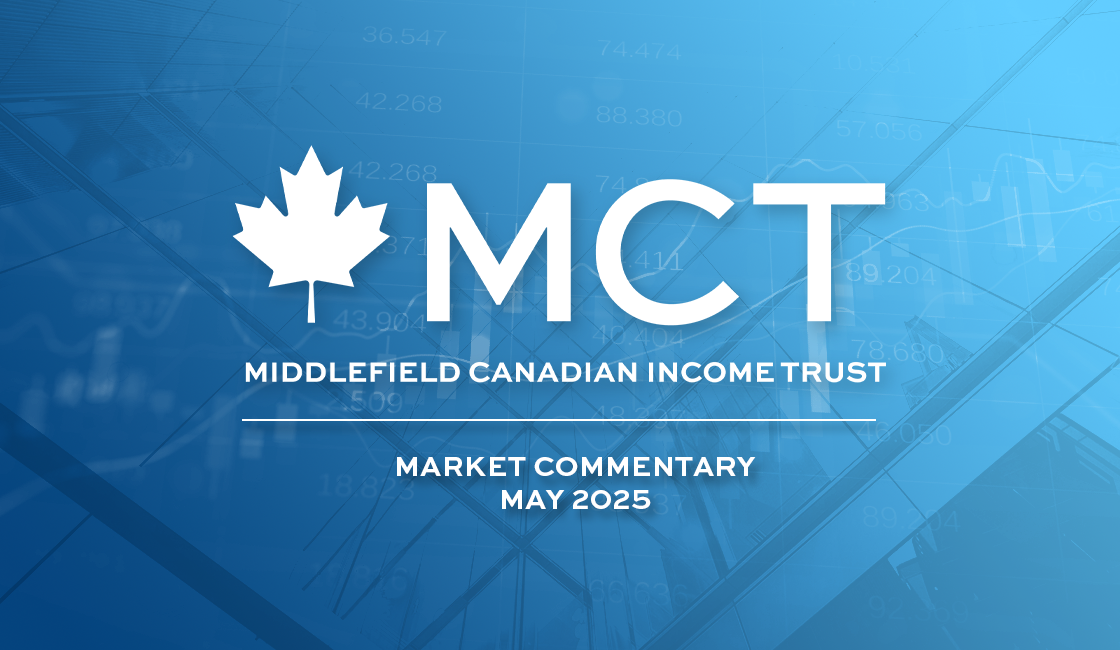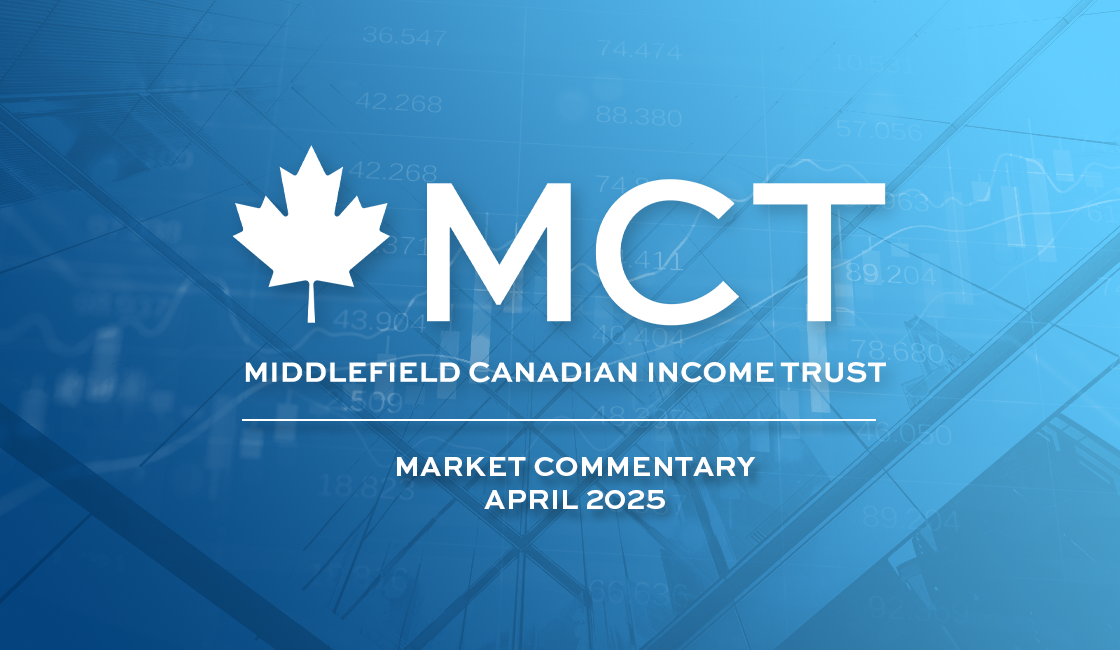The market rally continued in May following a de-escalation of tariff tensions. In British Pounds, the TSX Composite Index returned 5.1%, lifting the Index to new all-time highs. The Fund’s NAV returned 5.3%, outperforming the Benchmark return of 3.8%.
Despite tariffs on steel, aluminum and autos, Canadian equities have outperformed the U.S. in 2025. In local currencies, the TSX Composite has returned over 7% year-to-date, beating the S&P 500 return of 1.1% by a significant margin. Markets are reflecting a more sanguine outlook for the Canadian economy, which is also showing up in hard data. GDP growth in Q1 was better than expected at 2.2% while the early read on April data exceeded expectations. We also believe a tariff deal between Canada and the U.S. may be near. While the U.S. recently increased tariffs on steel and aluminum from 25% to 50%, Prime Minister Carney has opted for restraint vs. reciprocity citing “intensive discussions right now with the Americans on the trading relationship.” As a result, we are optimistic an agreement could be reached on or before the G7 meeting in Alberta, Canada from 15 to 17 June 2025.
M&A provided a lift to the Canadian real estate sector in May. InterRent REIT, one of the Fund’s holdings, announced an agreement to be acquired by a joint venture between InterRent’s Executive Chairman/Founder who has intimate knowledge of the company’s operations and GIC, a sovereign wealth fund from Singapore who is one of the world’s leading private real estate investors. The offer represents a 35% premium to InterRent’s share price before take-out rumours surfaced in March and a 29% premium to its 90-day VWAP. The agreement includes a 40-day go-shop period, creating the possibility for a competing bid or a sweetened offer from the joint venture. Regardless of the outcome, the transaction validates our view that publicly listed apartments are trading significantly below their true intrinsic values and M&A activity will help support a re-rating in the apartment sector specifically and in Canadian REITs generally. More specifically, MCT’s REIT portfolio returned 5.9% in May, exceeding the Benchmark and TSX Composite returns of 3.8% and 5.1%, respectively. We expect this momentum in the Canadian REIT sector to continue in 2025, thereby supporting the Fund’s overweight to the real estate sector.
Prime Minister Carney and Canada’s Premiers have introduced legislation to fast-track nation-building projects and relax rules affecting where skilled workers can operate. The goal is to pass the ‘One Canadian Economy Act’ through the Parliament before the summer break. This announcement signals renewed momentum for large-scale infrastructure investment that aims to boost national resilience, diversify Canada’s market access, and unify the country through economic development. Proposed LNG projects off Canada’s west coast, which could be built within the next 5 years, represent over 6 Bcf/d of export capacity – a significant new source of demand in the context of Canada’s current production of approximately 19 Bcf/d today. Further egress for Canada’s gas-rich basins is expected to drive material upside to today’s regional prices. As such, we maintain our high conviction on the medium to long-term outlook for Canadian gas companies. MCT has exposure to several gas-focused producers, including Arc Resources, Peyto Exploration and Tourmaline.
Canada’s major banks delivered Q2 results that exceeded expectations, leading to strong returns for the group. Bank of Montreal, TD Bank and CIBC led the pack with total returns of 11.6%, 7.9% and 7.5%, respectively. Elevated trading activity was a common theme across the sector, contributing to solid performance in capital markets divisions. Canada’s big six banks also reported Common Equity Tier 1 (CET1) ratios between 160 and 340 basis points above the 11.5% regulatory minimum—equivalent to a C$58 billion capital surplus. Overall, the quarter underscored the banks’ earnings resilience and disciplined risk management.















